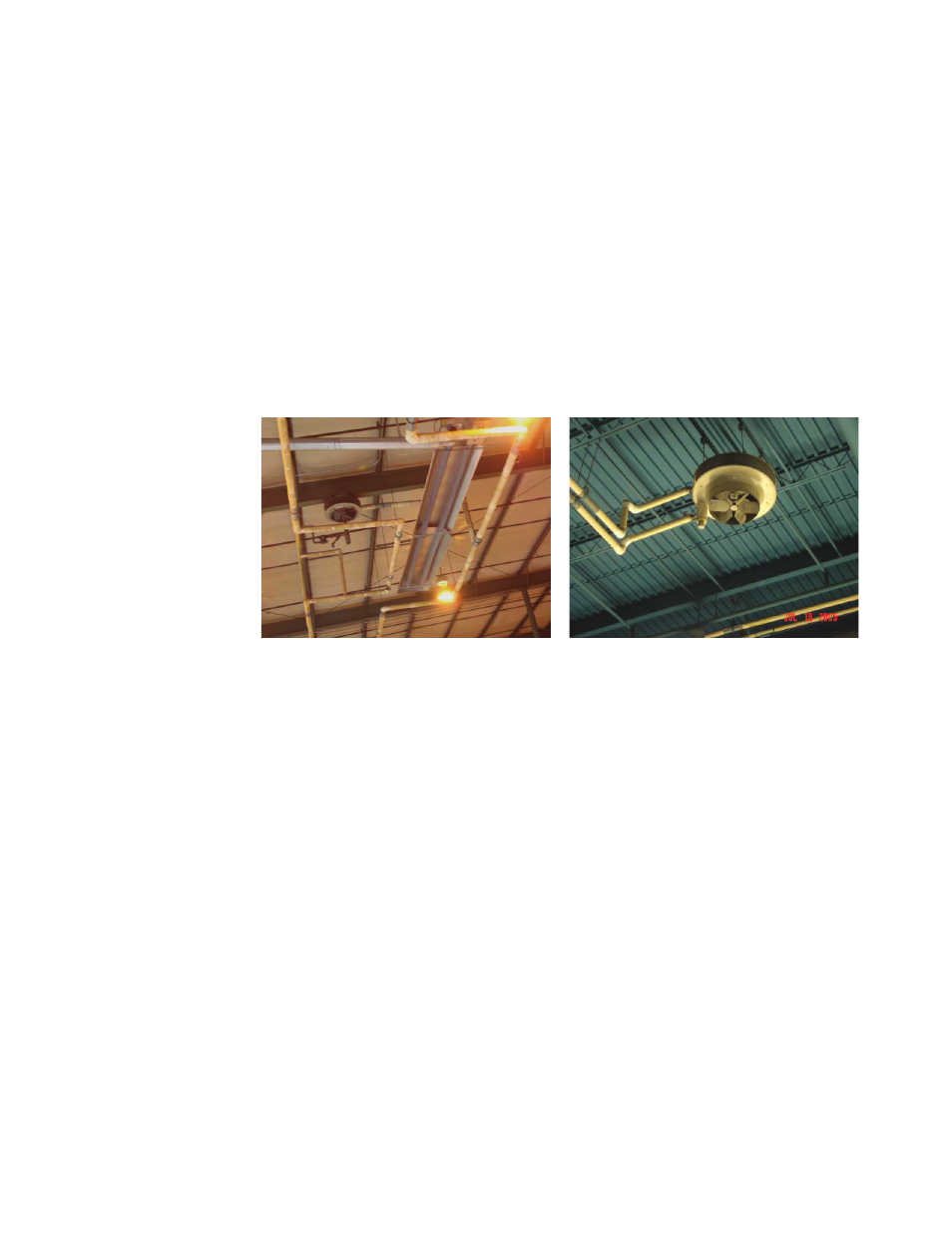Retrotec USACE User Manual
Page 156

D26 ENERGY & PROCESS ASSESSMENT PROTOCOL
without directly heating the surrounding air. Minimal loss of heated air occurs
and energy effi ciency is obtained by not heating the air above the occupants or
stored material.
D.2.2.2 Heating or Cooling Unused Spaces (Waste)
Heating or cooling is typically employed to enhance occupant comfort. Some-
times equipment or processes require heating or cooling for specifi c needs,
or the building may require heating to prevent freezing of liquids stored in
pipes or containers. However, when spaces are unoccupied and equipment or
process requirements are not involved, heating or cooling can be eliminated.
Eliminating heating or cooling of a space will reduce or eliminate the energy
associated with comfort conditioning during unoccupied times.
D.2.2.3 Heating Building with Only Unit Heaters (Ineffi ciency)
Figure D44. Hot water unit heater.
Figure D43. Steam unit heater alongside a
gas-fi red radiant heater.
Many industrial, maintenance and storage buildings are heated only using unit
heaters. A unit heater is a heating device that consists of a gas-fi red furnace
or heating coil, a fan, and air directional blades (e.g., Figures D43 and D44).
Building air is pushed through the heating coil and directed to desired loca-
tions using the directional blades. Heat is provided by burning natural gas in
the furnace with air moving through the furnace’s combustion chambers, or air
can pass through a coil through which hot water or steam fl ows. A unit heater
has a marginal effectiveness, since the fan is usually not strong enough to push
the warm air to the fl oor, where the people are. Buildings that use unit heaters
normally have a signifi cant temperature variation between the lower occupied
level and the upper strata of the building near the roof—as much as –6.7 to
1.1 °C (20–30 °F) difference may exist.
With the thermostat located in the lower occupied level, this heating system
will continue to operate longer than most other systems, since the warmed air
does not make it to thermostat level, having lost its downward momentum;
the natural rise of warm air has taken over. Estimates of heating use with unit
heater systems are 20% more than radiant heating systems.
